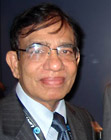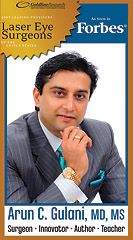
Preventing Medical Mistakes: Part 1: Ensuring patient safety

The recent death of famous comedienne Joan Rivers after she entered Yorkville Clinic in New York City for an endoscopy made headlines. Health investigators concluded that the fatal complication after a routine medical procedure may have resulted from several errors. The high-profile tragedy once again brought the issue of medical errors into our consciousness. You may remember the 1995 case of a Tampa surgeon who removed the wrong leg for a vascular disorder and subsequently lost his license to practice medicine.
One of the most difficult topics for a physician to discuss is mistakes committed by doctors and hospitals. As many as 25 percent of hospitalized patients experience some form of medical error, according to one report. Not many come to light or undergo public scrutiny. Doctors and hospital staff observe a closed-door culture by not talking about them publicly. Although doctors take an oath to do no harm to patients, preventable medical errors from negligence do happen. Although unintentional such errors need to be addressed and patient safety maintained at all times.
The extent of the problem
“Medical mistakes kill enough people each week to fill four jumbo jets,” says Marty Makary M.D., associate professor of surgery at Johns Hopkins Hospital. “But these mistakes go largely unnoticed by the world at large, and the medical community rarely learns from them.” Makary wrote "Unaccountable," a story about medicine's dangerous practices and its nascent transparency revolution.
To err may be human, but errors can be deadly and costly, and are entirely preventable. They may be the third-most-common cause of death in the United States, outranked only by cardiovascular diseases and cancer. The human toll aside, medical errors cost the U.S. health-care system tens of billions of dollars annually. Considering that 20 to 30 percent of all medications, tests and procedures are unnecessary, you can imagine the magnitude of the problem. It also erodes the public’s confidence in our ability to deliver proper care.
Here are some disconcerting statistics about medical errors:
- About 225,000 unnecessary deaths and 1.3 million injuries occur each year from medical treatment in the U.S., according to the latest data from American Medical Association;
- 3 percent of all adverse events cause permanently disabling injuries, of which 1 in 7 leads to death;
- Serious medication errors occur more than 1 million times each year of which 20 percent are life threatening;
- Four to 17 percent of all hospital admissions have a reported incidence of errors from treatment with medications or procedures.
Complications leading to disability and death can occur during the normal management of an illness, especially if the condition is serious or the patient has to undergo surgical interventions. They should not be confused with medical errors. Operative mortality rate for coronary bypass surgery is still about 1 to 2 percent. Surgery for cancer, acute abdominal surgery, complex interventions for stroke and others carry risk that should be understood. Occasionally a bad outcome may be perceived by the patient or relatives as an error. One such incident happened to me a few years ago.
Mary J., a 66-year-old woman, was admitted to Brooksville Regional hospital with severe angina — possibly an impending heart attack — and we recommended urgent heart catheterization and intervention. Her daughter, a cardiac nurse working at a major teaching hospital in New York, immediately flew down to check on her mother. Unimpressed with the small rural hospital although our results for cardiac procedures were excellent, she wanted to take her mother back to New York and refused my suggestion to transfer by air ambulance.
The patient was discharged against medical advice and left by car to New York after a couple of days. However, Mary developed severe chest pain while on the road and needed emergency coronary bypass surgery when she reached Montgomery, Ala. The daughter complained to the Florida Board of Medicine that a medical error was committed in discharging a sick patient prematurely from the hospital. After reviewing all the records, the investigator concluded that the daughter’s noncompliance with doctors orders were responsible for the adverse event. Fortunately, the patient recovered and I heard no more about the case.
This series will continue next month.
M.P. Ravindra Nathan, M.D., is a cardiologist and Emeritus Editor of AAPI Journal. His book “Stories from My Heart” was recently released. (www.amazon.com or www.bn.com).
Eye Care
NEW YEAR; NEW EYES: An Animated Reality or A Real Animation?

Having recently operated on a patient from Switzerland with a combined technique to correct her Keratoconus (cone-shaped cornea with high astigmatism) using Intacs microsegments and cataract with new generation lens implant, including the use of a recently FDA-approved incision glue (no stitches), she mentioned that she now had a perfect seeing eye that even looked spectacular. She even participated in our institute’s Fashion Show the same day after her surgery.
As she requested on her other eye having a similarly custom-designed surgery plan, she revealed to me about how her company in Zurich was actually working with Disney to make its animated characters more realistic by focusing on the uniqueness of the eye.
Scientists at Disney Research in Zurich, Switzerland, have noted that the eyes besides being a window to the soul are indisputably the most important features of an individual’s face, so the use of generic eye models when creating digital faces can have disappointing results. Noting the significant variation in eyes between individuals, they are working on capturing those features.
Despite advances in digital animation, animated characters can look uniform and lifeless, as they lack the asymmetrical features and tiny imperfections of real eyes (O Times). Even though the human eye is one of the central features of individual appearance, its shape has so far been mostly approximated in our community with gross simplifications.
Using multiple cameras and lighting variations, Disney research has more accurately captured the shape and texture of the white sclera, the shape and refraction of the transparent cornea, and the shape and coloring of the iris, including how it deforms as the pupil narrows and widens. This unprecedented level of detail enables the creation of an eye model that both captures the look of the person’s eye and can duplicate how it responds to changes in lighting.
According to Pascal Bérard, a Ph.D. student at Disney Research Zurich, “creating a photo-realistic digital human is one of the grand challenges of computer graphics, but despite intense research on capturing actors’ faces — especially for reconstruction of the skin surface and features such as hair — little attention to date has been given to the eye, particularly its shape . Generically modeled eyes may be sufficient for background characters, but it now takes significant effort to manually create realistic eyes for heroes and other leading characters.”
This quest does not stop with Disney. One of my recent patients who works for Sony in Japan, mentioned to me how video games are seeking a similar goal, in fact video games such as “The Last of Us” and “Get Even” have begun raising the bar on the realism of their characters by pursuing this goal relentlessly. It was amusing how recently an ophthalmology periodical (O Times) that carries my surgery columns also mentioned these new age quests.
It got me thinking. So as the animation industry makes things more “real,” how about us “real” people aspire to make things as close to animation as possible?
As described in my previous columns, our vision surely is a personalized function, which should be attained at its highest level using custom-designed surgical plans as opposed to cookie-cutter surgery.
So, we could actually ask for a custom LASIK or custom cataract surgery with “high definition” vision with high contrast with full spectrum of vision functions including distance and reading and then take that to a higher level asking for appearance enhancing techniques that further highlight our individual eyes – our most distinguishable feature.
As long as we remain within some limited boundaries of “realistic” expectations, all these functions are actually available right now. We must be careful though not to push for more as we may end up making Stephen Hawking’s prediction of AI (Artificial Intelligence) taking over the world to blur the line between “animation” and “reality.”
That reminds me I have to see “The Theory of Everything” when my daughter comes home from college this week. Until then, wish you all a very Happy New Year!